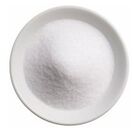Ann Diener: Entangled Grid
Ann Diener: Entangled Grid
SBCC Atkinson Gallery
January 31-February 28, 2014
For the last ten years, Ann Diener has been mapping the layered history of the places she knows best in her large-scale drawings: first, the transformed Ventura farmland of her childhood and, more recently, the sprawl of Los Angeles as demarcated by its fraught aqueduct. However, Diener’s drawings are not road atlases (nor GPS devices) plotted by compass coordinates, but a local’s hand drawn directions delineated by memory’s landmarks. Perhaps even more accurately, her drawings are stratigraphic contexts—careful records of archeological excavations. Not only geographic, but also temporal, they chart the way a location is inevitably changed by its inhabitants over many generations creating what the artist calls a “hybrid space”.
Diener’s recurring loop motif that once implied the arched structures of strawberry greenhouses now suggests the endless deluge of the infamous St. Francis Dam Break. Into the large sweep of her drawings, Diener incorporates tiny, finely wrought details. The jumbled coexistence of these precious artifacts unmoored and revealed by the flood subverts chronology by making time contiguous. Like water, Diener’s marks are circumlocutory taking circuitous routes between point A and point B underscoring the fluid connections between the times and places she depicts.
The city of Los Angeles is both site and subject of all of the work in the Entangled Grid exhibition. Cartesian systems cum architectural skeletons form the substrate of these drawings; the grids morphing alternately into the crisscross of streets, stained glass windowpanes and towering steel frameworks. Like the city itself, these drawings grow organically, annexing each adjacent section while large swaths of white paper remain as yet unclaimed. The vegetation depicted in the drawings indicates the city’s agricultural past and perhaps its future reclamation. As a living organism, a city requires water to flourish. However, water can also wreak havoc causing death and destruction. Linear rather than solid, Diener’s LA is cacophonously impermanent, in a state of constant flux.
Contradictorily encompassing and myopic, Diener’s massive pieces are made of snippets—small, seemingly disconnected parts creating a whole. Thanks to their sheer magnitude, the viewer is fully immersed in her drawings, only able to see detailed fragments up close and the general aggregate from afar. In this exhibit, Diener experiments further with scale and the use of component parts in two interrelated grid formations. On one side of the gallery, a series of six-inch square drawings are exhibited in three uniform rows. The rigid lattice maintains their individual strengths as discrete works while forcing the viewer to consider their interconnectivity. These drawings share many conceptual ideas and design elements with Diener’s larger works, however they are distinctly denser, filled edge to edge with graphite and paint. On the opposing wall, these images are reproduced to form the underlying structure of a site-specific wall drawing. Subsumed by paint and collage, the constraints of this grid are eroded.
These works about time and place require time and place themselves.
Sarah Cunningham
Atkinson Gallery Director, SBCC
January 2014
Diener’s recurring loop motif that once implied the arched structures of strawberry greenhouses now suggests the endless deluge of the infamous St. Francis Dam Break. Into the large sweep of her drawings, Diener incorporates tiny, finely wrought details. The jumbled coexistence of these precious artifacts unmoored and revealed by the flood subverts chronology by making time contiguous. Like water, Diener’s marks are circumlocutory taking circuitous routes between point A and point B underscoring the fluid connections between the times and places she depicts.
The city of Los Angeles is both site and subject of all of the work in the Entangled Grid exhibition. Cartesian systems cum architectural skeletons form the substrate of these drawings; the grids morphing alternately into the crisscross of streets, stained glass windowpanes and towering steel frameworks. Like the city itself, these drawings grow organically, annexing each adjacent section while large swaths of white paper remain as yet unclaimed. The vegetation depicted in the drawings indicates the city’s agricultural past and perhaps its future reclamation. As a living organism, a city requires water to flourish. However, water can also wreak havoc causing death and destruction. Linear rather than solid, Diener’s LA is cacophonously impermanent, in a state of constant flux.
Contradictorily encompassing and myopic, Diener’s massive pieces are made of snippets—small, seemingly disconnected parts creating a whole. Thanks to their sheer magnitude, the viewer is fully immersed in her drawings, only able to see detailed fragments up close and the general aggregate from afar. In this exhibit, Diener experiments further with scale and the use of component parts in two interrelated grid formations. On one side of the gallery, a series of six-inch square drawings are exhibited in three uniform rows. The rigid lattice maintains their individual strengths as discrete works while forcing the viewer to consider their interconnectivity. These drawings share many conceptual ideas and design elements with Diener’s larger works, however they are distinctly denser, filled edge to edge with graphite and paint. On the opposing wall, these images are reproduced to form the underlying structure of a site-specific wall drawing. Subsumed by paint and collage, the constraints of this grid are eroded.
These works about time and place require time and place themselves.
Sarah Cunningham
Atkinson Gallery Director, SBCC
January 2014
Exhibition Catalog
| sarah_cunningham_essay_-sbcc_-_jillian_mcdonald_valley_of_the_deer.pdf |
